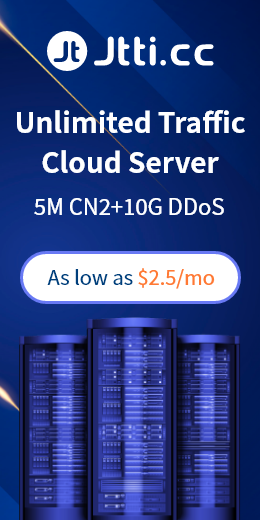Choosing a suitable game high-defense server configuration is one of the key factors to ensure the smooth operation and security of online games. Choose the configuration of the game high-defense server to meet the needs of different game projects. Key aspects such as hardware performance, network bandwidth, DDoS protection, data center location and cost will be covered.
Part One: Hardware Performance
When choosing the configuration of a high-defense game server, one of the first factors to consider is hardware performance. Different games require varying degrees of computing and storage resources. Here are some key considerations for hardware performance:
CPU performance: The CPU is one of the core components of the game server. It is responsible for processing game logic, player commands and data exchange. For massively multiplayer online games (MMOs) or games that require complex calculations, it is important to choose a configuration with a multi-core CPU and a high clock frequency.
Memory (RAM) capacity: Memory is used to store game data and temporary calculations. For large game worlds or games that require high levels of concurrent performance, larger amounts of memory can improve server performance.
Storage: Fast storage solutions are critical for game servers because they need to read and write large amounts of game data quickly. Solid-state drives (SSD) or NVMe drives are generally better suited for gaming servers than traditional hard drives (HDDs) because they offer faster data access speeds.
GPU acceleration: Some games may require GPU acceleration, especially for graphics-intensive games. In this case, choosing a server configuration with a powerful GPU can improve graphics performance.
Multi-server cluster: For large games or projects that require high scalability, consider building a cluster with multiple servers to share the load.
Part 2: Network Bandwidth
Network bandwidth is another important aspect in the configuration of game high defense servers. Game servers need to have enough bandwidth to handle the data traffic of large numbers of players. The following are key considerations when it comes to network bandwidth:
Bandwidth Capacity: Make sure your server configuration has enough bandwidth to support the needs of the game. High-traffic games require greater bandwidth to ensure a smooth gaming experience.
Bandwidth type: Choose high-quality network bandwidth, especially for multiplayer online games. A network with low latency, low packet loss, and high reliability is key to ensuring gaming performance.
Traffic management: Consider whether the game server requires traffic management and QoS (Quality of Service) control to ensure priority transmission of important game data.

Part Three: DDoS Protection
Online game servers face the threat of DDoS (Distributed Denial of Service) attacks, so it is crucial to choose a server configuration with strong DDoS protection capabilities. The following are considerations related to DDoS protection:
DDoS protection service: Choose a game high-defense server provider to provide powerful DDoS protection services. These services can detect and mitigate various DDoS attacks, ensuring game server availability.
Attack traffic capacity: Understand the maximum attack traffic capacity that the DDoS protection service can handle. Make sure it is strong enough to withstand possible large-scale attacks.
Custom rules: Some game server providers allow users to customize DDoS protection rules to suit the needs of specific games.
Part 4: Data Center Location
The data center location of the game's high-defense server is also a key factor, which directly affects players' latency and connection quality. The following are considerations related to data center location:
Geographical location: Choose a data center close to your target player base to reduce network latency. This can improve the player's gaming experience.
Redundancy: Consider choosing a server provider with multiple data centers or network connections to increase server availability and redundancy.
Part 5: Cost
Last but not least is the cost. When choosing a configuration for your gaming server, consider your budget constraints. Servers with different configurations vary in price, so there is a trade-off between performance and cost.
Monthly or per-usage billing: Some server providers charge monthly fees, while others charge per-usage. Choose the right billing method based on your needs and budget.
To sum up, choosing a suitable game high-defense server configuration requires comprehensive consideration of multiple factors such as hardware performance, network bandwidth, DDoS protection, data center location and cost. Make sure your server can handle the demands of your game, while also being mindful of budget constraints. It is best to consult a professional game high-defense server provider for customized solutions and suggestions to ensure that your game project reaches the best level in terms of performance and security.

 EN
EN
 CN
CN









